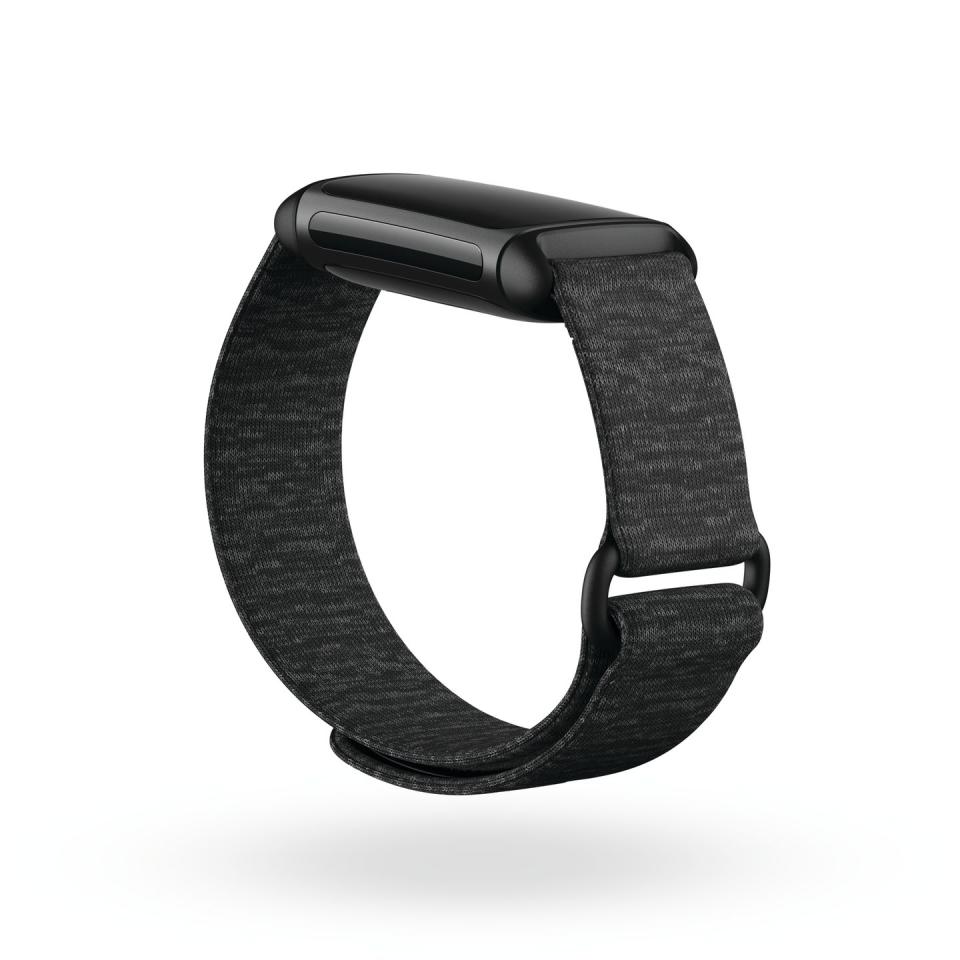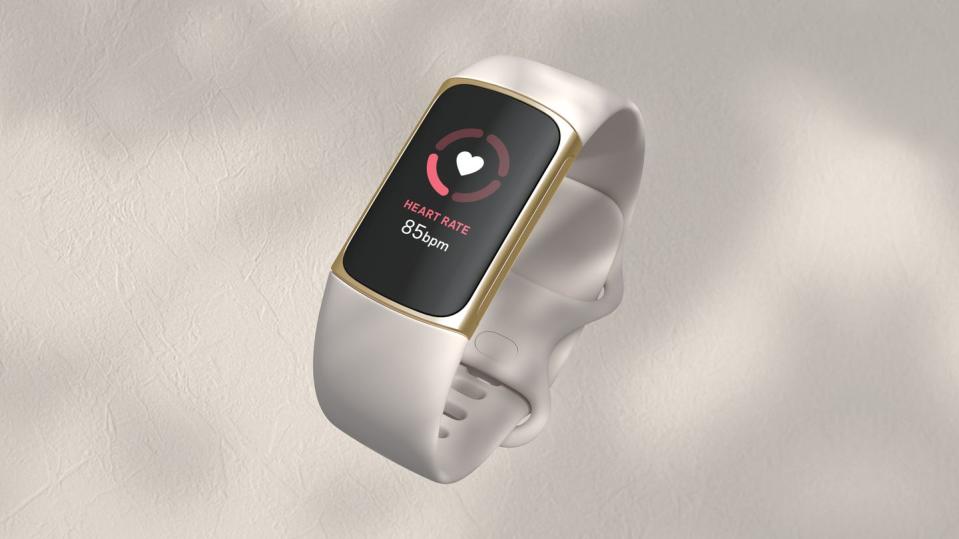Fitbit's New Tracker Is Smoother and Smarter Than Ever

As smartwatches became more sophisticated and left other wearable devices in the dust when it came to controls, features like colorful touchscreens, and specialized capabilities, opting for a fitness tracker over a watch could be seen as a sort of tradeoff of form vs. function. Still, plenty of people prefer the smaller footprint of a slim fitness tracker on their wrist over often-bulky watch casings, even if it means that they won't be able to do as much with their device.
If that device is Fitbit's new Charge 5, however, they'll be able to do more than ever before with a tracker. The Charge 5 is packed with the type of tech typically only seen in smartwatches, which helps to establish a new standard for what trackers can do (it also helps that not many other companies are still making trackers). If the Charge 4, which came out last year, served as a happy medium between those who want to wear a smartwatch and those who want less of a constant tether to their phones, the Charge 5 is more of a fully-realized step in a different direction. You get many of the health features typically associated with high-level smartwatches without the bulky casing, distracting screens, and importantly, the hefty price tag.
How Wearing the Charge 5 Feels
The most noticeable improvement from the Charge 4 to Charge 5 is right on the screen: it's gone from grayscale only to bright full-color display. I personally didn't mind the muted display of the previous generation, but there's no denying that the more vibrant screen of the Charge 5 is easier to read at a glance. Along with adding color, Fitbit says that the new display is twice as bright as the previous generation's.
The shape of the tracker itself has morphed, too. Where the 4 had some angles at the corners, the 5 now has smooth contours. This makes the new Charge even more comfortable to wear, especially during activities with lots of arm movement like weightlifting and boxing. With the old design, I sometimes had issues with the corners poking me or jutting uncomfortably when I bent my wrist.

Another change: the inductive spot used as a button, which was on the inside corner of the tracker's body, has been removed. Navigation is done solely with taps and swipes on the touchscreen, which is much more responsive and fluid than in other wearable devices I've used in the past. Bodyweight exercise enthusiasts will be glad to hear this improvement—sometimes when I would drop to do pushups or even bend my wrist into extension to hold a barbell, the button would register and throw off the activity tracking. This new button-free setup debuted in the smaller, less feature-packed Luxe device earlier this year, but the experience is even smoother on the larger Charge 5, with its extensive array of features and capabilities. I especially liked using the on-device payments feature for a smooth entry onto the subway, and that I didn't feel impelled to read every single text message I received on the smaller screen compared to my incorrigible smartwatch habits.
Training With the Charge 5
Tracking activities on the Charge 5 is a pretty smooth experience, and there are 20 different sport modes to choose from so just about all types of athletes are represented. There are also a few automatic SmartTrack sports—I tacked on an extra jog while wearing my review unit without starting the device manually, and after a few strides, a subtle buzz on my wrist notified me that I could begin tracking right then.

Those pings also let you know when you're entering different heart rate zones, which Fitbit labels as "Fat Burn" and "Cardio". This is a helpful feature for anyone looking to use those measures to gauge their workout intensity. A built-in GPS, which came to the Charge line with the 4, enables on-screen pacing and distance readouts for longer workouts like runs or bike rides, but the smaller screen and more limited features of the tracker make it tougher to take advantage of without a phone. Once you check out your workout summary on your mobile device, you can see exactly where in your run or ride your heart rate spiked and fell via the map, which is a cool feature.

Health Comes to the Charge 5
Tracking is what longtime Fitbit users expect from a tracker—it's in the name, after all—but the health features, which come down to the Charge line from the brand's premium smartwatches, bring the device to another level. The electrodermal activity (EDA) sensor that debuted in the Sense makes its way to the Charge. Just grip the sides of the device and sit still for 3 minutes and the device scans for for responses on your skin to gauge your stress level. Immediately after scanning, you fill out a mood assessment, and the Fitbit app might suggest a guided breathing exercise. Check the app, and you'll also receive a Stress Management score, based on several other criteria.
You can also check important metrics right on your wrist, like blood oxygen saturation (SpO2), resting heart rate, and Sleep Score. Don't worry step addicts—daily steps and Fitbit's more sophisticated Active Zone Minutes measure are available on-wrist, too. More information about all of those readings are available on the Fitbit app, and even more insights on those readings are accessible via Fitbit's paid Premium membership.

Unfortunately, two of the Charge 5's most intriguing health features were not available to test, and won't be ready at launch. The ECG app, which debuted on the Sense smartwatch and aims to detect abnormalities in the heart beat known commonly as atrial fibrillation, will eventually come to the Charge 5 at a later date.
A more sophisticated Daily Readiness score, which will be available to Premium members, uses data taken from exercise, sleep, and HRV (heart rate variability) to give users an indication of how prepped they are for physical activity on a given day. If you've used devices like Whoop or the Oura ring, you'll be familiar with the concept. But Fitbit uses its Premium offerings to take the measure a step further: Depending on the score, the Fitbit app will prompt users to take on different types of activities for the day—if they're primed to perform, a strength workout, for example; if they're not raring to go, maybe a relaxing yoga or meditation session. Fitbit says the feature is "coming soon."
Why You'd Want the Charge 5
Overall, the Charge 5 performs as advertised. The smaller, slimmer design was a nice change of pace from bulkier smartwatches on my wrist, and the battery lasted just a little longer than the company claimed, coming in at just over seven days on one charge during my testing. The device is definitely a step up from the old tracker you remember from the early days of fitness tech—but if it will work for you is an entirely different matter.
At $179, the Charge 5 is much cheaper than some smartwatches that boast similar health bonafides—but it's certainly not pocket change. This is the type of device for someone who is ready and willing to make the most of its overpowered specs, not someone just looking to fill up space on their wrist. Fitbit has the Luxe and even the budget-minded Inspire 2 for that type of user. So if you want to have some high-level insight into how your body is performing, but a watch isn't your style, go for the Charge 5.
You Might Also Like